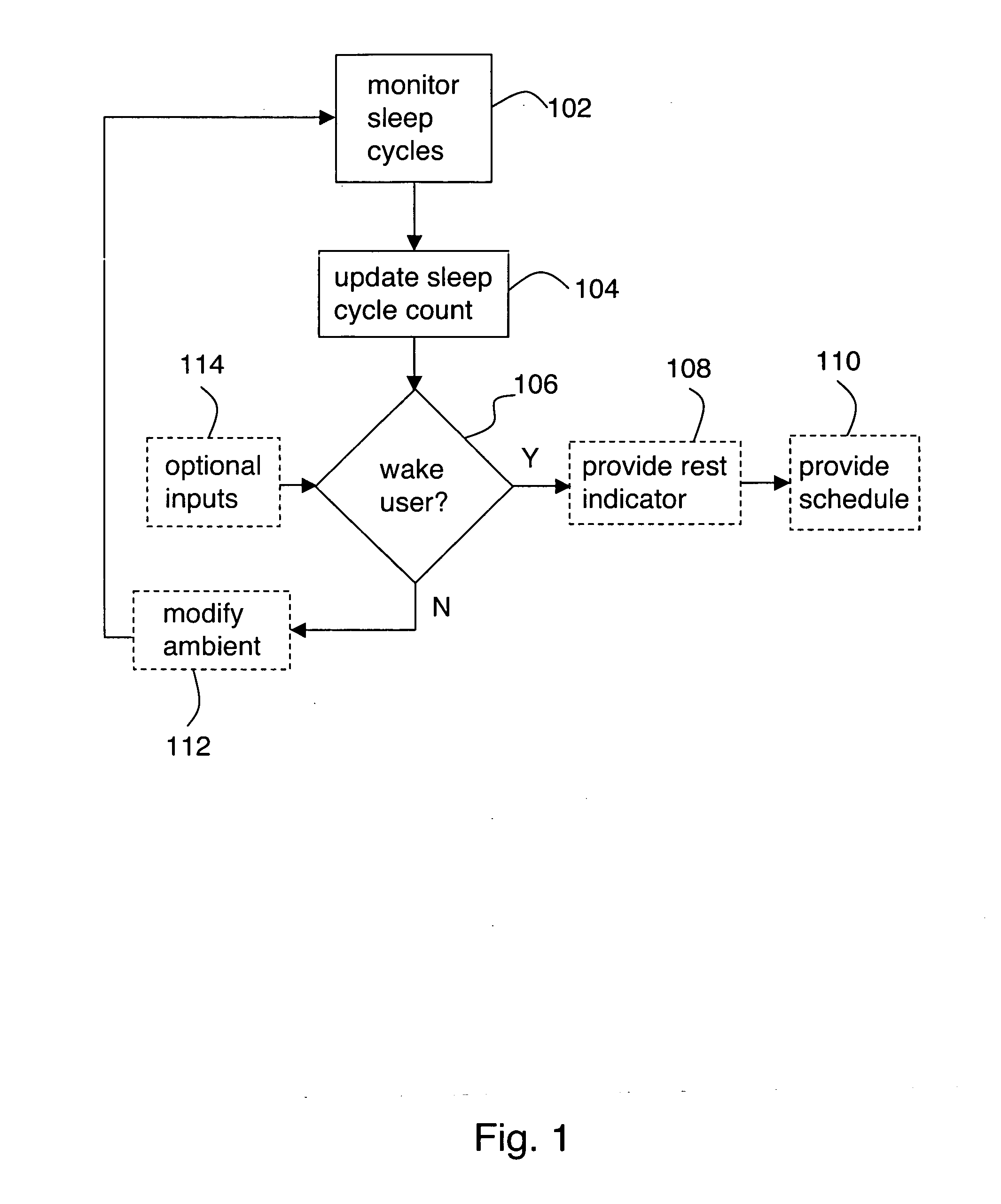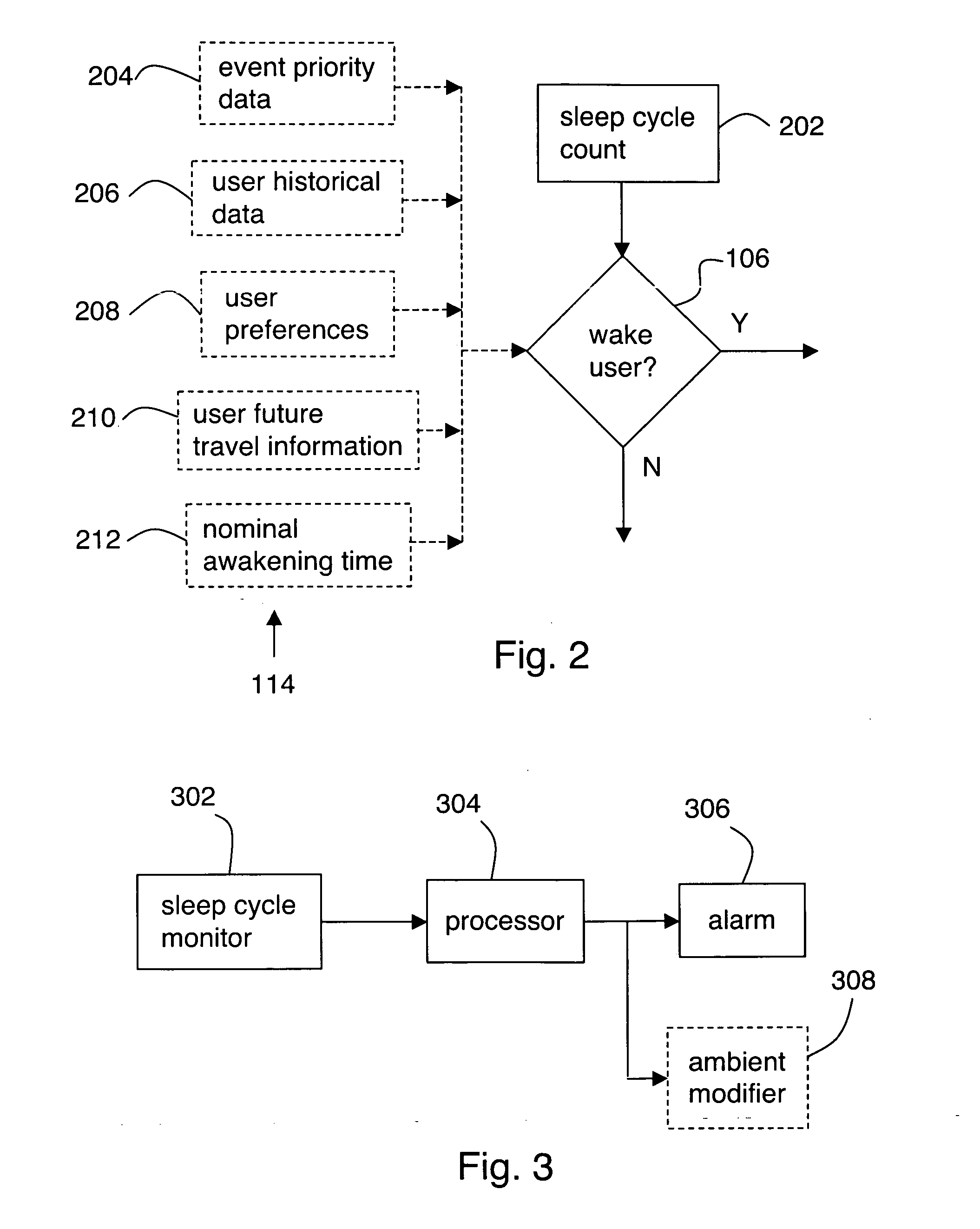Monitoring and control of sleep cycles
a technology of sleep cycle and monitoring and control, applied in the field of monitoring and controlling sleep, can solve the problems of people losing some of the ability to regulate their body temperature, not immediately adapting, and groggy and disoriented, and achieve the effect of optimizing and fully controlling the individual sleeping behavior
- Summary
- Abstract
- Description
- Claims
- Application Information
AI Technical Summary
Benefits of technology
Problems solved by technology
Method used
Image
Examples
example 1
The user is assumed to be an athlete that has used a system according to an embodiment of the invention for sufficient time to collect useful historical data and who will be competing in an event in a foreign time zone. For the purposes of this example, the athlete is living and training in California for an event in England, and desires to slowly adjust to the new time zone before he travels over seas.
One week before departing to England, the athlete, who ordinarily gets up at 8:00 AM, sets his system up for 8:00 AM London time. The system calculates the time difference to be 8 hours. The system will not attempt to make the full 8 hour adjustment over 7 days, but only a more reasonable three hours adjustment. Otherwise the athlete would be going to bed in daylight hours during the week prior to the event. This would not be practical. Over the next 7 days the system turns on a light at a low level a half hour earlier on each successive morning and slowly ramps up to full intensit...
example 2
For purposes of this example, we assume the athlete of Example 1 has an event scheduled for noon the next day and that the athlete has several preparations (Priority Events) that must be considered to properly prepare for and enhance the day's performance. Furthermore, the athlete desires to NOT be awakened on the day of the event during a critical sleep cycle, before the completion of his optimum personal sleep cycle, or in such a way that does not encourage optimum performance.
First, the athlete desires to be awakened with sufficient time to: 1) Eat breakfast; 2) Use the bathroom and shower; 3) Stretch; 4) Meditate; 5) Watch a motivational tape; 6) Call home and talk to parents; 7) Drive to the event; 8) Meet with coach for a final pep talk; and, 9) Engage in final warm up and mental prep for the event.
The athlete notices that not all of the above activities are absolutely necessary and that it would be acceptable to forgo or reduce some pre event activities in excha...
PUM
 Login to View More
Login to View More Abstract
Description
Claims
Application Information
 Login to View More
Login to View More - R&D
- Intellectual Property
- Life Sciences
- Materials
- Tech Scout
- Unparalleled Data Quality
- Higher Quality Content
- 60% Fewer Hallucinations
Browse by: Latest US Patents, China's latest patents, Technical Efficacy Thesaurus, Application Domain, Technology Topic, Popular Technical Reports.
© 2025 PatSnap. All rights reserved.Legal|Privacy policy|Modern Slavery Act Transparency Statement|Sitemap|About US| Contact US: help@patsnap.com



